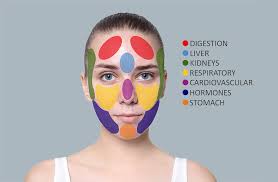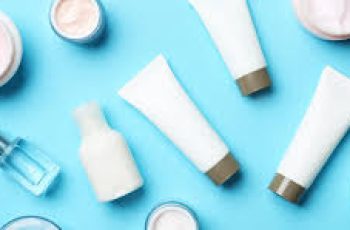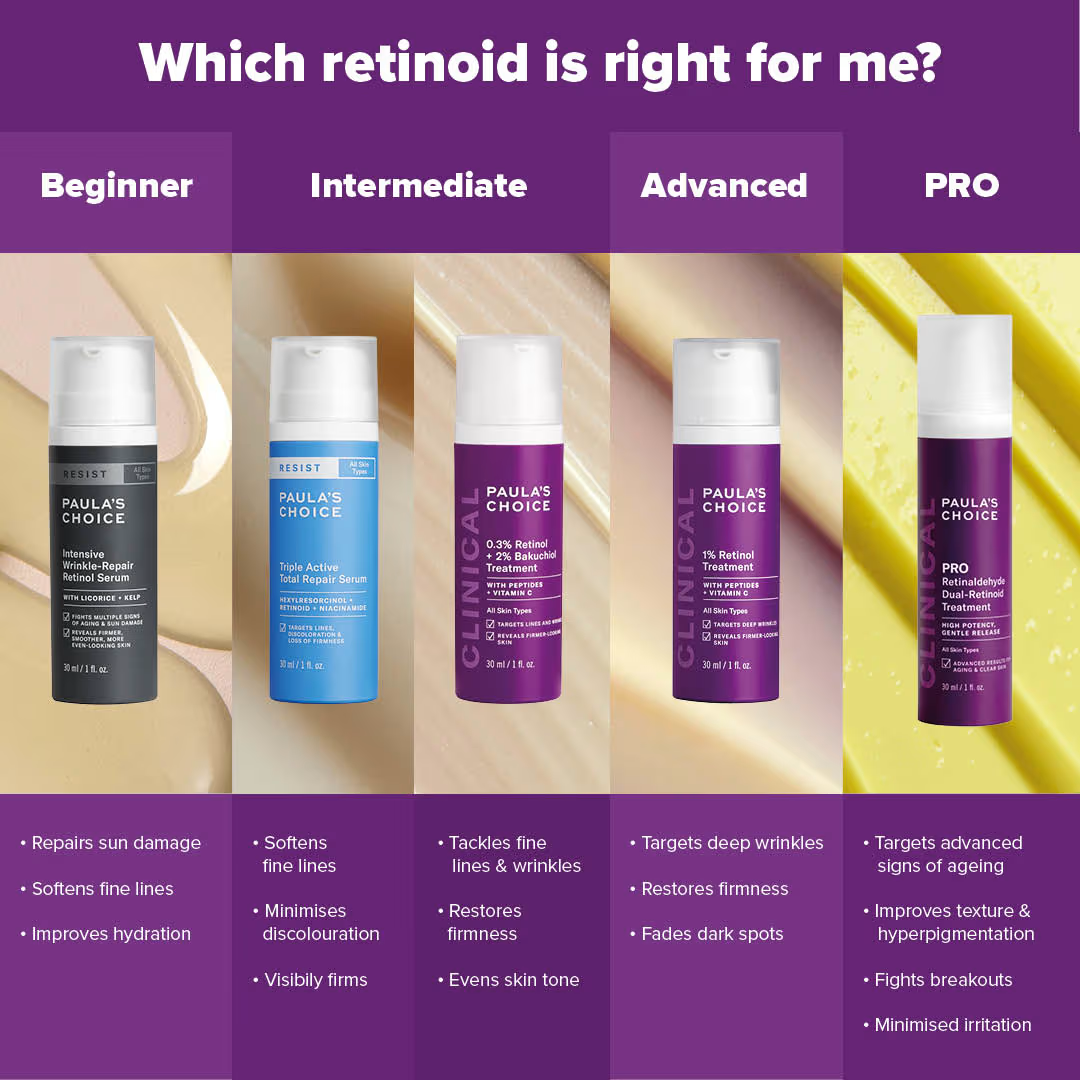
Acne breakout location suggests underlying cause
You may have heard that chin acne is caused by hormones and forehead acne is caused by stress. But is there scientific data to support these claims? And is there anything you can do to promote healthy skin without actually putting anything on your skin?
Read on to learn more about acne face mapping, what acne spots mean, and what to do if you frequently get rashes in a specific area of your face.
Acne Face Mapping and What It Means
Acne face mapping is a practice rooted in Ayurveda and Chinese medicine. It is based on the theory that health issues in the body are linked to where acne appears on the face. For example, acne on the forehead is associated with poor digestion, while acne on the cheeks is thought to indicate problems with the lungs. Face mapping can also be used to find solutions for psoriasis, eczema, and other chronic skin conditions.
Although the practice of face mapping dates back at least 3,000 years, there is little scientific evidence to support some of its claims. 1 However, over time, new face mapping techniques have replaced previous speculations and are backed up by dermatological research.
Forehead and Nose
Traditional facial mapping assumes that the forehead and nose (or T-zone) are connected to the gut, bladder, and heart. Previous recommendations have been to change your diet or reduce stress levels, which are known to wreak havoc on digestion and skin.
However, recent studies have linked T-zone acne to hormone fluctuations and stress. 2 Studies have shown that stress can exacerbate acne breakouts by triggering inflammation and delaying wound healing. 3 The T-zone also has more sebaceous glands, making it a common location for frequent breakouts.
Treatment Options for Forehead and Nose Acne
In addition to reducing stress levels, some treatment options to consider for forehead and nose acne include:
Wash your face daily with a gentle cleanser.
Use Foundation Skincare Niacinamide Lotion 10% to balance oil production and reduce inflammation.
Hydrate your skin with FS Hyaluronic Acid, which acts like a magnet for water.
Use FS Azelaic Acid 14%, which reduces skin inflammation and redness, removes dead skin cells, opens pores, and eliminates bacteria on the skin to promote healing and prevent breakouts.
Protect your skin from the sun with SPF 30 or higher.
Always wash your face after working out or playing sports.
Chin and jawline
Both traditional facial mapping and modern dermatology agree that acne on the chin and jawline is hormonally related. Androgens such as testosterone, dihydrotestosterone (DHT), and DHEA stimulate sebum production on the chin and jawline, leading to clogged pores and acne breakouts.
These rashes may occur more frequently during periods of hormonal fluctuations, such as puberty, menstruation, and menopause. Women with medical conditions such as polycystic ovary syndrome may also be prone to such breakouts. Men who take anabolic steroids or corticosteroids that affect testosterone levels may experience hormonal acne as a side effect.
Your diet can also indirectly affect your chin and jawline. A poor diet with too much sugar and processed junk food can disrupt gut health and hormones, leading to hormonal acne.
Treatment Options for Chin and Chin Acne
In addition to a healthy diet, there are other options for treating chin and chin acne:
Wash your face daily with a gentle cleanser.
Use a vitamin C lotion to remove dead cells and reduce inflammation. Studies have shown that applying vitamin C twice daily can reduce acne lesions compared to a placebo. 4
Use a 10% niacinamide lotion to reduce oil and relieve swelling and inflammation in cystic acne.
Use FS Azelaic Acid 14% to further reduce skin inflammation and redness, open pores, and eliminate bacteria on the skin.
Protect your skin from the sun during the day with an SPF 30 or higher.
At night, apply FS Night Renewal Cream with 2% Granactive Retinoid to minimize inflammation and unclog pores, thereby reducing the appearance of acne.
Some people use oral contraceptives or anti-androgen medications to control hormonal acne.
Drink green tea, which is rich in polyphenols that have antioxidant, anti-inflammatory, and antimicrobial properties.
Azelaic Acid 14% Cream
Azelaic Acid 14% Cream
• Reduces acne and rosacea
• Brightens skin tone and fades brown spots
• Unclogs pores and improves skin texture
Regular Price $45
Add to Cart
Cheeks
Traditional facial mapping links the cheeks to the respiratory system. Breathing exercises may be recommended to relieve acne on the cheeks.
Aside from poor lung health, the cause of acne is more likely to be friction from pillowcases and cell phones, irritating makeup, or simply touching your face too often. This area of the face is also known as the U-zone. In addition to lifestyle habits, genetics and hormones can also influence acne breakouts on the cheeks.
Treatment Options for Cheek Acne
If lifestyle factors are affecting your cheek acne, there are simple habits you can change. For example, if you talk on your cell phone a lot, use a speakerphone instead. Making sure to clean your makeup brushes regularly and try not to touch your face can also have a positive impact on skin health. Other treatment options for cheeks include:
Wash your face daily with a non-irritating cleanser and pat dry.
Moisturize your skin with FS Hyaluronic Acid.
Layer on products like FS Vitamin C Lotion and FS Niacinamide Lotion 10% to reduce inflammation, redness, and dead skin cells.
Apply FS Azelaic Acid 14% at the end of your routine to eliminate bacteria on your skin.
Protect your skin from the sun with SPF 30 or higher.
At night, apply FS Night Renewal Cream with 2% Granactive Retinoid to minimize inflammation and unclog pores, which can reduce the appearance of breakouts. Retinoids also help stimulate collagen production to support skin renewal and protect the skin.
Hairline
Hairline acne is most likely caused by hair products like pomade, mousse, or dry shampoo. “Hair products tend to be very waxy and can accumulate at the hairline and cause breakouts,” explains dermatologist Amy Kassouf, MD. 5 Tight headwear can also cause breakouts at the hairline, especially if sweat is trapped at the hairline. If you work in an oily environment, such as in the kitchen, you may be prone to this type of breakout.
It’s also possible that fungus can affect your hairline and scalp. As with any other acne, stress, hormones, and genetics can play a role.
Treatment Options for Hairline Acne
Treating hairline acne depends largely on what you think is causing the problem. Managing stress levels is always good for your skin (and your overall health!), as is avoiding products that may be too irritating to the skin. Other treatment options for hairline acne include:
Avoid wearing tight hats, which can exacerbate hairline acne.
Eliminate oily hair products from your daily regimen.
Follow a healthy skin care routine using the products listed above: FS Hyaluronic Acid, Vitamin C Lotion, FS Niacinamide Lotion 10%, and FS Azelaic Acid 14% as the last step in your daily skin care routine.
Some doctors prescribe topical or oral antibiotics to treat hairline acne, antifungal medications, or even antihistamines if the acne causes itching.
Steps to Prevent Facial Acne
No matter where acne appears on your face, there are steps you can take to prevent it from coming back. In addition to the above tips, you should also adopt the following habits for clearer skin:
Follow a balanced diet with lots of fruits and vegetables.
Drink plenty.
If you feel your diet is lacking in important vitamins and minerals that support skin health, take supplements for further support.
Regular exercise removes toxins from your body, improves circulation, and supports your overall health.
Never scratch your skin.
Get plenty of sleep.
Wash your pillowcase regularly.
Follow a healthy skin care routine.
While traditional face mapping can’t be fully backed by science, the philosophy behind the practice is a positive one. We should approach our skin health holistically and make sure our internal health is as balanced as what we see on the outside.


